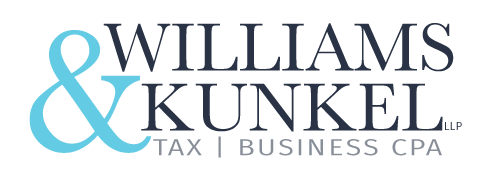People are living longer, which means your retirement years are longer, too. But do you have enough money saved up to have a long, healthy retirement? (Dallas Business Advisors: Stretch Your Retirement Savings)
Watch out for fees.
You’d be flabbergasted to see how much of your retirement can go to administrative fees. Many savers focus solely on their returns, not realizing how much of the returns don’t actually get paid out to their portfolio.
Which fees should you be aware of?
- Expense ratios: Average dollar value divided by the annual charge applied to all funds (mutual, index, and exchange traded funds)
- Mutual fund transaction fees: Broker charge to buy and sell mutual funds
- Sales load: Fund with a sales charge or commission
- Management fees: These are fees paid out to the fund’s investment advisor for managing the fund’s investment portfolio and other administrative fees not included in the “other expenses” category.
- 12b-1 fee: If you’re paying managed account fee, most managed accounts will credit back the 12-b1 fee.
Even a 1% or 2% fee can have a massive long-term cost, especially when you consider compounding. A 1% fee could cost $590,000 in retirement savings for an investing millennial, age 25, with $25,000 in a retirement account, adding $10,000 each year, earning a 7% average annual return and planning to retire in 40 years. When possible, look for expense ratio fees under 1%.
Lower fee products that tend to work well for retirement savings typically include index funds and ETFs (Exchange Traded Funds). Still, keep an eye on potential fees and meet with a licensed professional for guidance on your specific situation.
Build a retirement plan now.
Wherever you are in your retirement process, it never hurts to get an updated strategy in place.
Many people underestimate how much they should store away in order to live comfortably throughout retirement. You’ll need to account for your everyday bills and increasing healthcare costs, but you’ll also want to consider the amount that would offer you financial freedom to live the retirement of your dreams.
Come up with a clear vision for how you want to retire, whether it’s vacation around the world, play golf every day, or volunteer your days to a nonprofit. Factor in the costs of your dream life when creating your retirement plan.
Manage your debt.
It’s hard to save when you have debt over your head. Start by listing all your debts in order of highest to lowest interest rate; you’ll want to pay off the highest interest rate debt first, so your money goes to paying off the actual debt, not the accrued interest.
Once you’ve paid off your debts, allocate that amount in your budget to your retirement account. If you spent $500 every month to pay off your debts, use that $500 for savings. This will bump your savings quickly without changing your lifestyle.
Create guaranteed income streams.
A 2005 study found that retirees receiving annuities from defined benefit pensions were happier than those without pensions and those with only a defined contribution plan. It’s like having a salary every month, so you know exactly how much you’ll have to budget.
Annuities are one of the strongest ways to get guaranteed income in retirement. By paying a financial institution a lump sum or series of payments, they’ll offer you a regular income every month, typically with the option of going until the end of your life or until the annuity is paid out.
There are different types of annuities based on your individual goals, and many offer the option to pay you a certain amount of money each month for the rest of your life. Even better, they defer taxes until withdrawal so you can keep compounding money.
Make sure you’re working with a financial institution with high ratings. The annuity guarantees are backed by the financial strength and claims-paying ability of the issuing insurance company.
Increase your contribution by 1% each year.
Compounding is your best friend when it comes to saving for retirement. The more you contribute early on, the more you’ll collect over time. That’s why it’s so important for young professionals to start saving early.
Grow your retirement savings without impacting your lifestyle by increasing your 401(k) or Roth IRA contribution 1% each year. It won’t put a serious dent in your lifestyle, but you’ll be adding a few more dollars that can compound over time.
Know how to work your taxes.
Taxes can take a huge chunk out of your savings. You want to primarily save using tax-deferred accounts, which aren’t taxed until you start withdrawing. This means you add more cash to your account upfront so it can compound at a higher rate, which can help grow your money faster before the government takes its share.
Roth IRAs are a popular savings method because they’re highly tax-efficient. You might want to consider transferring your 401(k) or traditional IRA to a Roth IRA for long-term tax savings. (You’ll get taxed at the time of rollover, but you’ll have the opportunity for tax-free growth over time.)
Consider catch-up contributions.
This is a great option for individuals age 50 and up who want to focus on saving in their last few years in the working world. There are contribution limits for tax-advantaged retirement accounts like IRAs and 401(k)s. Starting at age 50, though, you can make catch-up contributions above those annual limits to add more into your retirement accounts.
When saving for retirement, the top priority is keeping your account as hefty as possible to compound over time. This means looking at areas where you’re losing money through the cracks, like fees and taxes.
Working with a financial advisor is a great way to catch these expenses, invest in consistent-growth funds, and effectively manage your money. It’s never too early or late to start getting the most out of your retirement savings.
Call Williams & Kunkel CPA today in Flower Mound at 972-446-1040 to have a chat and find out how you can save money on your taxes as a real estate professional.
In addition, you can connect with us to receive updates throughout the business week by following us on Twitter or LinkedIn or liking us on Facebook.
Source: Forbes

